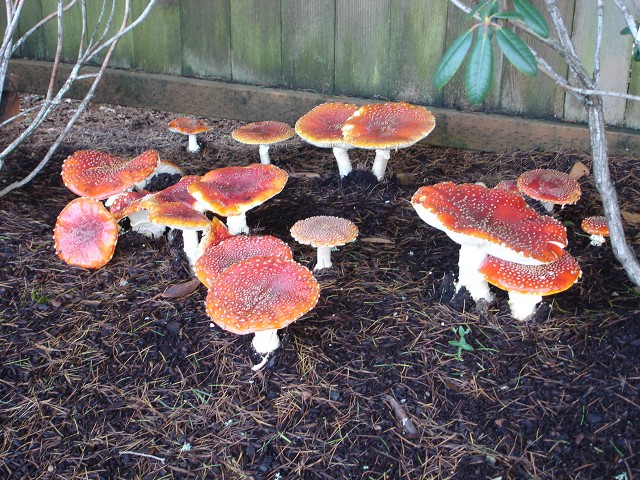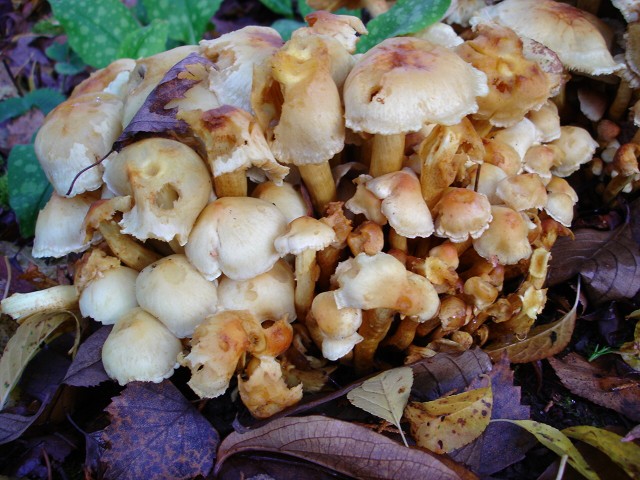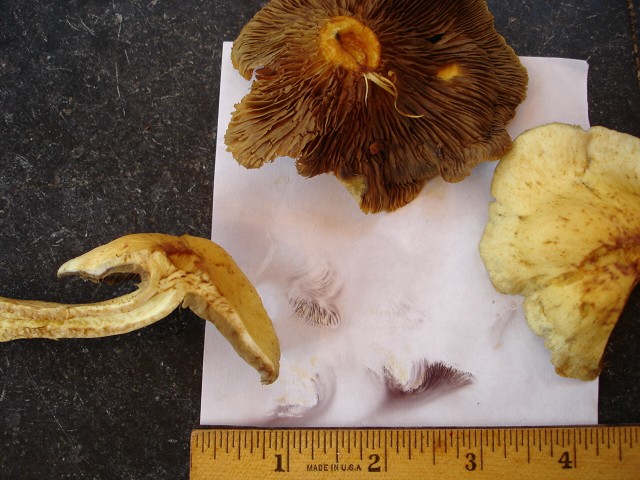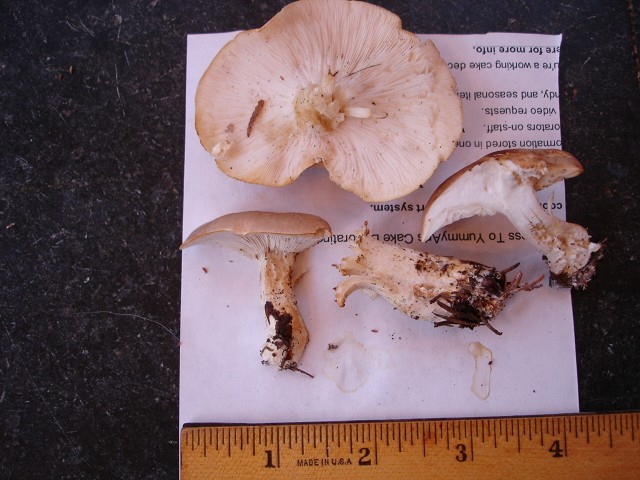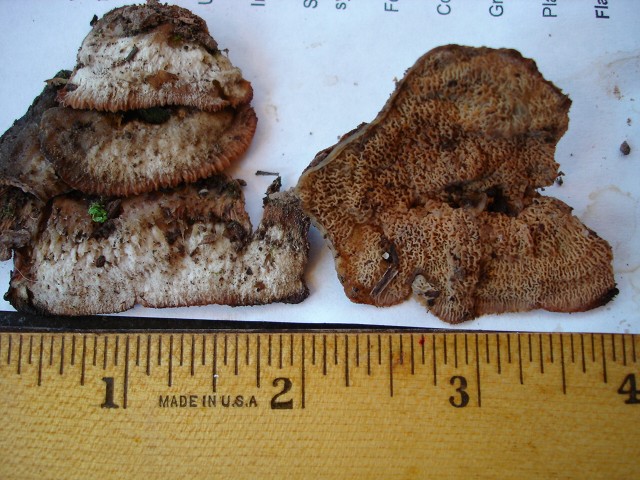Paul: Now I have several more guesses and a cool Amanita collection across the street and up the hill.
002 – Amanita – hard to believe – must have come in with the bark dust.
004 and 005 – Phylloporus – brown spores, bruised blue gills, yellow cap, adnate to decurrent gills.
006 – Leucopaxillus – white spores, suede/tan cap, slightly decurrent gills
008 – Phyllotopsis (wild guess and doesn’t look like picture in Arora MD) –
poor spore print but probably white, gills (if you can call them that)
seem to be a cross between pores and gills
(is this a “sub gill” that was discussed in the OMS course?),
growing on wood in overlapping shelves, no stipe, caps appear dirty (is that woolly?).
This is a VERY distinctive mushroom that I often find in the coast range.
Once I learn it I’ll never forget it.
Dick B: Yes Phylloporus does have brown spores and the gills of some varieties of some species
do bruise blue.
They also can have yellowish caps but I have never seen one that color.
Looking at Phylloporus in a little more detail we find that the spores are
yellow-brown, orange-brown or olive brown.
To my eye yours appear to be purplish brown.
This doesn't completely disqualify it as I have found other mushrooms with strange spore colors this year.
I would be curious if the gills can be removed easily from the cap like bolete pores are from their caps?
If so it likely is a Phylloporus.
If not we need to consider some other possibilities.
One question that came to mind immediately when I saw the pictures;
is the mushroom pictured in 005 really the same mushroom as in 004?
The mushrooms in 004 are cespitose, have very sturdy stipes in relation to the size of
the cap and seem to have veil remnants on many of the caps.
Even though some of the caps appear to be well past there prime I see no sign of brown spores.
All of which leads me to the conclusion that they probably are not the same and are not Phylloporus.
Let us know what you find about the gills and whether 004
is really the same as 005 and we'll see what else we can discover.
Sava: The spores in 005 are purple-brown.
That and caespitose habit (assuming 004 and 005 are the same)
point to something very common that would be a better guess than Phylloporus.
Kit Scates chart?
Leucopax seems right to me for 006, but 008 is not Phyllotopsis---that thing has gills.
Paul: Regarding 004 and 005, they are the same.
Third - There are about six (cespitose:^)
clumps within a few feet of each other.
The size and color range of individuals range from pencil-eraser-size
yellow caps with yellow gills to 3-inch-size brown caps with brown gills (probably older?).
I could take more pictures of the variation if that would help.
The tiny eraser-size individuals have a silky veil.
The veils seems to disappear in the older individuals.
My untrained eye can’t see remnants (on cap or stipe) on the older individuals.
Fourth – the gills do not pull away from the cap.
The gills are hard to grasp.
Even scraping with a knife doesn’t facilitate pulling the gills away.
Fifth – regarding Sava’s comment on spore color – you are probably right.
That leaves three possibilities on the Kit Scates chart:
Not similar to any Stropharia I’ve seen,
the stipe is not long, and the gills are not purple
All the stipe is yellow not just at the base.
The cap flesh is yellow in the young individuals.
The cap is not viscid – so probably not Gomphidius.
That leaves Chroogomphus.
I can “imagine” the center of the cap being slightly orange.
My wife says the cap is yellow with a redish brown (not orange) center.
If it’s a Chroogomphus, its not a pine spike but closer to C. rutilus.
BUT I’m not comfortable with any of the three above.
BTW. What the heck is 008?
I often find it on rotten logs in the Coast Range woods (not the yard).
Got to thinking about it and revisited the Stropharia key.
This could be S. hardii. The brown spots on the yellow cap,
the disappearing veil with age and the lawn habitat (it’s in bark dust a foot from a lawn).
Sava: "Grows on woodchips" is "grows on wood".
Paul: Thanks for the hints.
The hints taken collectively and notes from the course about a hollow stem and
Scates commenting on the ‘bits of cobwebby veil” (even though I could not see it)
lead me to Hypholoma/Psathyrella. I’ll take Arora’s advice and not try to get the species.
Dick B: If you use the Key to the Polyporaceae on page 551 of MD,
and don't make any missteps, you may end up at the Stereaceae and Allies Key on page 605.
If so use said key and in 6 or 7 steps come to the species that I think it might be
